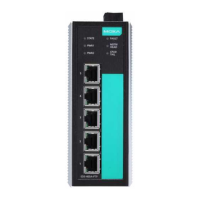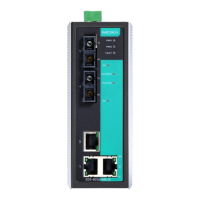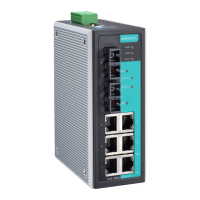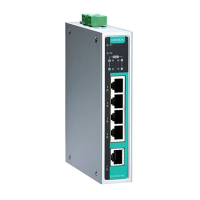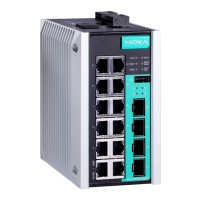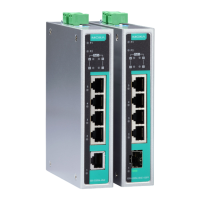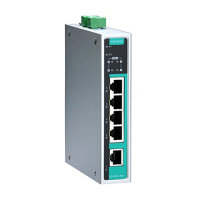PT-7728 User’s Manual Featured Functions
3-33
Turbo Chain
Select this item to change to the Turbo
Chain configuration page
RSTP (IEEE
802.1W/1D)
Select this item to change to the RSTP
configuration page.
None Ring redundancy is not active
Role
Setting Description Factory Default
Head Select this PT as Head Switch
Member
Member Select this PT as Member Switch
Tail Select this PT as Tail Switch
Head Role
Setting Description Factory Default
Head Port
Select any port of the PT to be the head
port.
Port 1-1
Member Port
Select any port of the PT to be the member
port.
Port 1-2
Member Role
Setting Description Factory Default
1
st
Member port
Select any port of the PT to be the 1
st
member port
Port 1-1 (without Gigabit
Ethernet module)
Port 4-1 (with Gigabit
Ethernet module)
2
nd
Member port
Select any port of the PT to be the 2
n
member port
Port 1-2
Tail Role
Setting Description Factory Default
Tail Port Select any port of the PT to be the tail port. Port 1-1
Member Port
Select any port of the PT to be the member
port.
Port 1-2
The STP/RSTP Concept
Spanning Tree Protocol (STP) was designed to help reduce link failures in a network and provide
protection from loops. Networks that have a complicated architecture are prone to broadcast
storms caused by unintended loops in the network. The PT-7728’s STP feature is disabled by
default. To be completely effective, you must enable RSTP/STP on every PT-7728 connected to
your network.
Rapid Spanning Tree Protocol (RSTP) implements the Spanning Tree Algorithm and Protocol
defined by IEEE Std 802.1w-2001. RSTP provides the following benefits:
y The topology of a bridged network will be determined much more quickly compared to STP.
y RSTP is backward compatible with STP, making it relatively easy to deploy. For example:
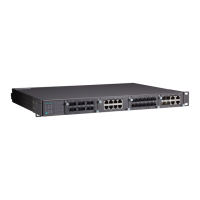
